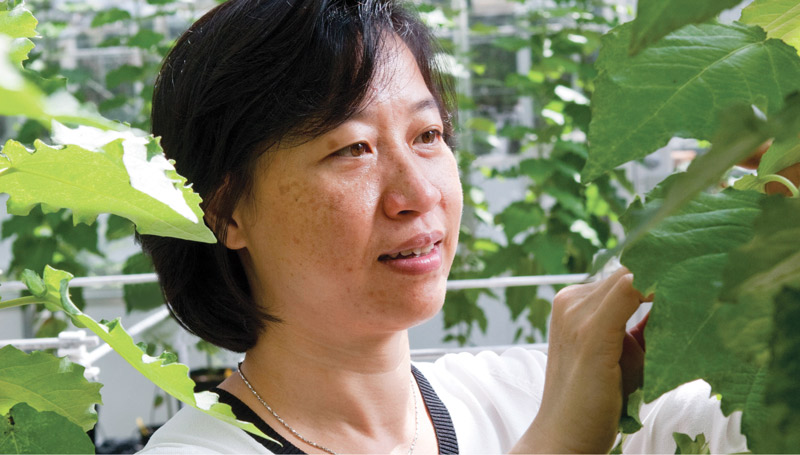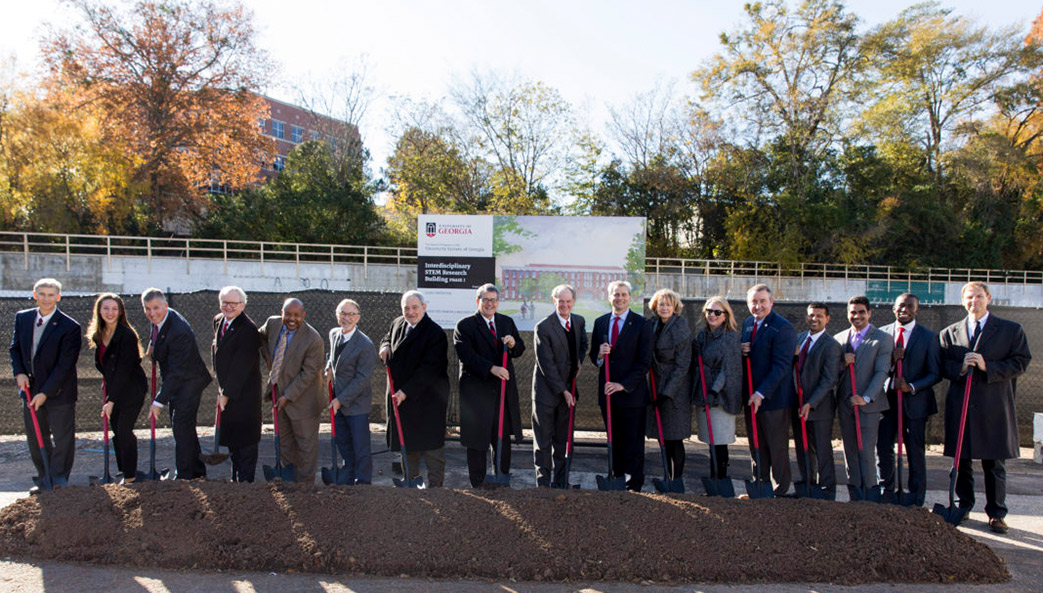Esther van der Knaap joined the University of Georgia last year as part of a presidential hiring initiative to recruit extraordinary research faculty. A professor in the department of horticulture and the Institute of Plant Breeding, Genetics and Genomics, van der Knaap explores the genetic mechanisms underlying the formation of fruits and vegetables like tomatoes and peppers. She also studies the evolutionary processes that led to the domestication of these crops. Here, she discusses her work and how the genetic tools used in her laboratory may help boost the yield and quality of agriculturally important crops, and what the future holds for plant genetics.
 You are widely recognized for your work on tomatoes. What drew you to this field of study?
You are widely recognized for your work on tomatoes. What drew you to this field of study?
I actually didn’t begin with tomatoes; my doctoral work focused on rice. I worked on a type of rice that grows very fast when the rice paddies are flooded during monsoon seasons, and I was studying the molecular processes that regulate their growth. I got a number of interesting leads from that study, but I didn’t have any way at that time to show that my leads were meaningful because of the lack of genetic tools. So that’s when I decided to start working on genetics. I didn’t really choose to study tomatoes per se; I had a really great opportunity to join a research program to do genetics research on tomatoes as a postdoctoral researcher, and I haven’t switched fields since.
What can we learn from studying tomato genetics?
Over the course of several thousand years, all agricultural crops and animals underwent a process called domestication where wild plants were adapted for human consumption. For tomato, this led to changing the fruit from a tiny round product to the large and variably shaped tomato that we all recognize. One thousand years may sound like a long time, but it is very recent on an evolutionary time scale. Because tomato domestication happened so recently, we can make a cross between a large tomato that you might buy in the grocery store and its closest wild relative and get very healthy seedlings with fruit that I can study further. That allows us to trace the genetic basis of the shape and size variation by mapping the various regions on its genome that control those traits.
How often does that kind of experiment lead to a new discovery?
Almost every time we identify a gene, we discover something unexpected. Sometimes we don’t know what the gene encodes, so our research leads to discoveries about genes that we don’t know very much about in plants in general. Sometimes we uncover unusual changes in the plant’s genome that gives us new information about how genomes evolve. It’s unpredictable. When we set out to identify another gene that controls the size of the fruit, I don’t know what we’re going to get, how long it is going to take and what we may do next. So a lot of our work focuses on basic scientific discovery. Yes, we are interested in the roles these genes play in controlling tomato shape and size, for example, but the genes we identify in those plants often help us better understand how they function more broadly in the plant kingdom. The potential for discovery really is endless.
Do these discoveries have any practical applications?
Absolutely. Our discoveries allow plant breeders to select seedlings with fruit traits that breeders want: large or small; oval, round or flat. We know, for example, that if a breeder wants to create slightly larger tomatoes in their lines, we can determine what crosses could be made to create a larger fruit by looking at their genotypes. If a breeder is working on a grape tomato and wants to create the same shape and size, but also improve it for disease resistance or some other quality, we know pretty well how to select for a type that will grow the right shape of fruit.
There has been a lot of public discussion about genetically modified plants. What are your thoughts about this debate?
All vegetables and fruits have been artificially selected by farmers since the dawn of agriculture. The genetic work we do in our laboratory leads to knowledge that can be implemented in tomato and other crops. By inserting a modified version of the gene we think controls fruit shape or size, we are able to prove the discovery of the gene that confers the expected trait. We need to make better progress on crop improvement because at the current rate we will not be able to feed the growing world population in the future. I hope that society will become more accepting of genome editing and plant transformation technology. In the future, a lot of our agriculture will rely on smart genetic modifications that make our food crops more resistant to pathogens or more resilient to climate change.






